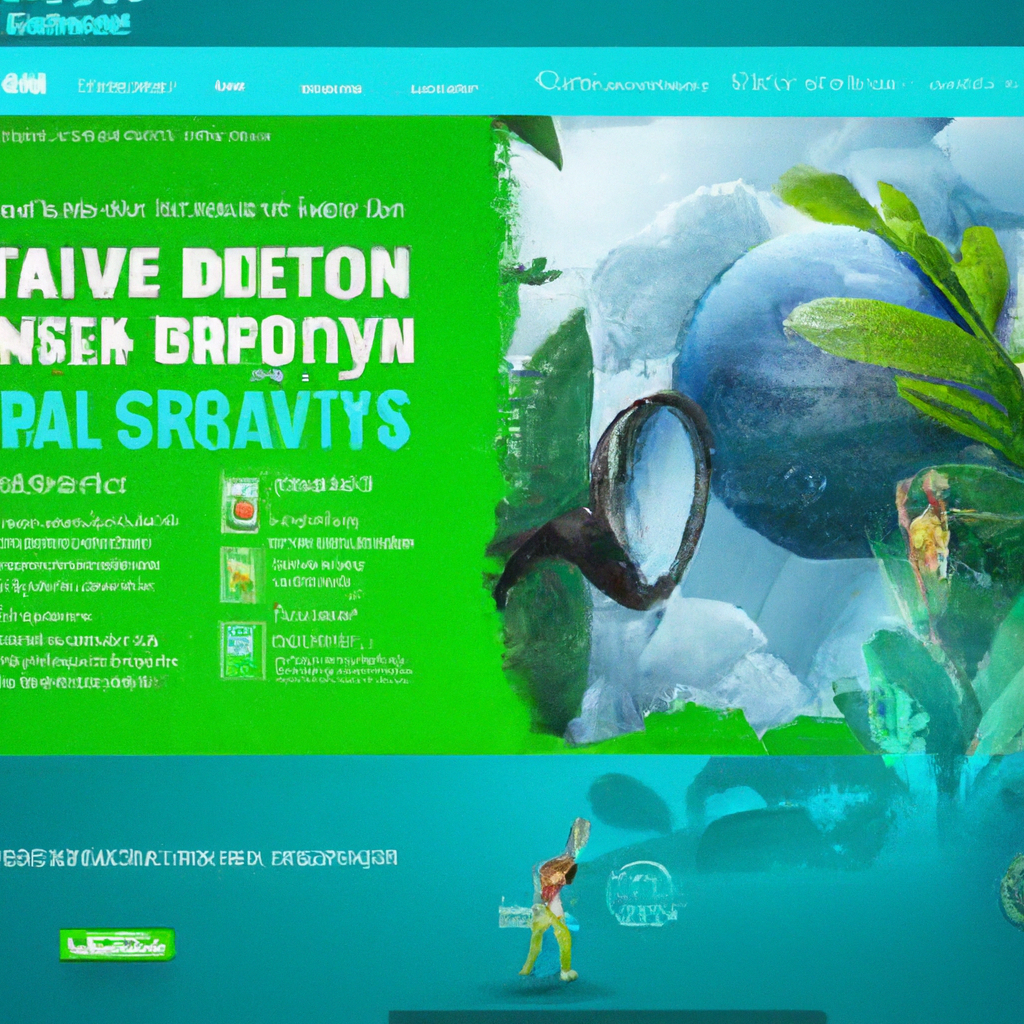Link Building Myths
Example Response:
Key Takeaway:
- Link building myths can be harmful to the SEO industry: False information and myths surrounding link building can create confusion and misinformation, leading to wrong practices in link building which can harm the website’s ranking in search engines.
- Links still play a vital role in digital marketing strategies: Links build relevancy and authority for a website, which is important for ranking in search engines. However, it’s crucial to know the myths and truths surrounding link building to avoid costly mistakes.
- Dangerous link building myths to avoid are: relying on third-party metrics as the only indicators of link opportunities, assuming relevant websites are the only source of valuable links, choosing between white-hat and black-hat techniques, believing all links on a page have equal ranking value, focusing more on quantity than quality of links, manipulating anchor text, engaging in reciprocal linking, and ignoring contradicting information leading to Google penalties.
Introduction to Link Building Myths
Link building is a crucial part of SEO, but it’s plagued with myths and misconceptions that can harm the industry in many ways. In this section, we’ll explore the harmful effects of these link building myths and misconceptions and how they can impact the SEO industry. With facts, figures, and events from top sources, we’ll shine a light on the truth behind these common misconceptions and show you the real effects they can have on your SEO efforts.
The Harmful Effects of Myths and Misconceptions on SEO Industry
Myths and misconceptions about SEO have caused real damage. Link building is important, but false ideas about it have hurt website owners. Misinformation has misled people and greatly affected their SEO performance.
We can debunk these myths by using reliable sources and research. People trust third-party metrics too much, so they rely on third-party tools to get links – and this can lead to Google penalties.
False information stops website owners from getting quality backlinks that increase search ranking. We must use best practices backed up by research, instead of myths, for successful link-building. Relevant websites are good sources, but not the only ones. It’s important to keep an open mind when searching for quality links.
We must understand the risks of myths. Anchor text manipulation is a bad idea and goes against Google’s guidelines. Instead, create informative anchor text, keep content relevant, and avoid catastrophic drops. Multiple links to the same URL on one page don’t add much weight, so change them up a bit. Also use redirects, fix broken links, analyze lost backlinks, and apply canonical tags.
Focus on quality rather than quantity. Build durable relationships with high authority domains. Links are the currency of the Internet, and highly desirable.
The Value of Links in the Digital Marketing World
Links are central to digital marketing. Link building is the practice of getting external sites to point to a page on one’s website. It is key to SEO because search engines rate sites with backlinks higher.
Internal links also indicate the relevance of webpages within a website. But, it is not true that more links equal higher rankings. Quality and relevance of the links matter too.
Having unique, informative content is vital for natural link building. Other sites will be more likely to link to a page which provides valuable info. Buying and exchanging links violate Google’s guidelines and can result in penalties.
Moz conducted a study which showed that external links from high domain authority websites are one of the strongest ranking factors for SEO. Link building should be done strategically and ethically for a successful digital marketing campaign.
Myths and Truths about Link Building
Link building is a crucial element in Search Engine Optimization, yet, it’s common to stumble upon false information. In this section, we’ll separate myths from truths surrounding link building. From the supposed reliability of third-party metrics in indicating link opportunities to the idea that only relevant websites can provide valuable links, we’ll examine some of the most widespread myths and analyze the truth behind them. Get ready to discern the facts from the fiction.
Myth#1: Third-Party Metrics are Reliable Indicators of Link Opportunities
Many in the SEO industry think that third-party metrics can be a misleading indicator of link opportunities. While these metrics can give an idea of websites and their trustworthiness, relying on them alone for link building is a common misconception.
Link building is now a key element of digital marketing. Thus, tools have been created to analyze sites and find link building chances. However, beginners should remember that these tools can’t tell the whole story. Other elements, such as content quality and relevance, should also be taken into account.
Third-party metrics are just one piece of the puzzle in link building. Digital marketers must do thorough research and manual checks, like analyzing content and audience, before deciding which sites to pursue.
SEO professionals advise using various approaches together for better results. Relying too much on third-party metrics can cause companies to miss out on link building opportunities. Relevance, topic area, and article structure are important to improving search engine rankings. That’s why digital marketers must take a multifaceted approach to their link building strategy.
Myth #2: Relevant Websites Are the Only Source of Valuable Links
Many people think that only relevant websites are a source of great links. But this is a myth! There are more sources that yield valuable links to increase website traffic and visibility. Link building isn’t restricted to relevant websites. There are other sources that offer valuable links.
For example, some websites link to broader audiences. Social media can also be helpful, by sharing posts or interacting with others. Guest blogging on different sites can reach unique people. Forums are great for connecting with people in related industries.
Newsletters and emails often have links that take readers back to the website. Industry-related directories can offer inbound link building opportunities. These may not be relevant websites, yet they can still provide valuable links.
It’s important to remember that relevant websites are not the only source of valuable links. Diversifying sources is essential to establish authority on topics. By using various sources, businesses can expand their reach and gain greater visibility.
Due to tech advancements, myths about link building emerged when amateurs entered the industry. This caused businesses to waste time and money on strategies with no clear results. It’s important to get info from credible sources before implementing link-building strategies. Doing so helps avoid myths and misconceptions and focus on strategies that bring good results.
Dangerous Link Building Myths
Link building is a crucial aspect of any successful SEO strategy. Yet, the world of link building is often mired with misconceptions and myths. In this section, we’ll dissect and debunk some of the most dangerous link building myths, including the debate between White-Hat versus Black-Hat Techniques, the importance of link quantity versus quality, and the impact of contradicting information on Google penalties. Let’s dive in and separate fact from fiction when it comes to link building.
Myth #3: Choosing between White-Hat or Black-Hat Techniques
Many digital marketers think they have to pick between white-hat or black-hat techniques when it comes to link building. But, this is just a myth. Both have their own pros and cons, and it’s up to the marketer to decide which one is best for their needs.
White-hat techniques are usually seen as the more ethical choice. This involves creating content that naturally attracts links from other reputable websites. For example: guest blogging, creating infographics, or doing original research.
Black-hat techniques use manipulative tactics to gain a lot of low-quality backlinks. This includes paid links, link exchanges, and comment spam.
Although black-hat techniques can give you quick results, it may result in penalties from search engines, whereas white-hat techniques can be more sustainable in the long run, though they take longer to produce results.
Digital marketers need to understand the differences between both methods, to make the right decisions for their business goals. Some tactics that seem “black hat” can be used ethically if done in moderation and with the user experience in mind. For instance, a few paid links on an otherwise white-hat site should not get penalized if those links offer relevant and useful content.
To conclude, by understanding the differences between white-hat and black-hat techniques, digital marketers can choose the most effective practices. Remember, when it comes to link quality, not all links are equal!
Myth #4: All Links on a Page Have Equal Ranking Value
Links have an important role in making website rankings better on search engines. But, it’s a myth that all links are the same. SEO pros should know the difference between links used for ranking. Studies say links in the main content of pages have more worth than those in secondary parts or margins.
Google knows when there are multiple links pointing to the same URL from different sources. Canonical tags are needed to help Googlebot choose the correct page for indexing, improving the SEO rating. It’s not a good idea to aim for quantity rather than quality when creating links. Quality links will increase credibility; spammy ones will not help rankings.
Studies show that backlinks from trustworthy websites are much better than from low-credibility domains or bad web pages. Too many outbound links that don’t have any helpful info can get your website penalized by Google and cause a huge drop in organic traffic. So, keep in mind: in link building, quality is more important than quantity, and not all links on a page are equal.
Myth #5: Quantity Over Quality of Links
Links have always been a crucial part of SEO. But, there’s a misconception that quantity of links is more important than quality. This belief – myth #5 – has made some people just aim to get as many links as possible, regardless of their value or relevance. Sadly, this can do more damage than good.
Quality links from high-authority sites are way better for search engine rankings. So, it’s vital to get quality backlinks that are relevant to your site’s content and niche.
Some believe that the number of links pointing to a website affects its ranking in search engines. This isn’t entirely true, as search engines look at many other factors when evaluating the credibility and authority of a website. Thus, having multiple unrelated and low-quality links can result in penalties from search engines like Google.
To stay safe and ensure effective link building, you must prioritize quality over quantity when searching for new link opportunities. Research your niche and go for backlinks from high-authority websites. This will help you avoid potential penalties caused by focusing on link quantity over quality.
Myth #6: Anchor Text Manipulation
Anchor Text Manipulation is the 6th myth about link building that needs explanation. People think using keywords in anchor texts will improve search rankings. This is not true. Too much optimization can get you penalized by Google.
Anchor texts are the words you see and click on within hyperlinks. When clicked, they take people to other pages on a website or a different website. If the links don’t offer value, they can be seen as spam and hurt your website’s reputation.
Using keywords in anchor texts is important. It helps search engines understand what the linked page is about. This builds trust and increases clicks and conversions.
You don’t need exact match or dense keywords in anchor texts for successful link building. A mix of branding terms and natural language variations offers a better user experience and a varied inbound hyperlink profile.
Myth #7: Reciprocal Linking
Reciprocal linking – once thought of as a great way to boost search engine rankings – is now known to be a myth. It involves two sites mutually agreeing to link each other’s pages.
Google’s algorithm updates have labeled this strategy as black-hat. Links from low-quality websites can actually hurt rankings. Therefore, businesses should steer clear of linking to irrelevant or spammy sites.
Continuously linking to the same sites over time could trigger penalties. Ethical link-building should be pursued through research and outreach. Clear up any misunderstandings around reciprocal linking. Avoid Google penalties at all costs!
Myth #8: Contradicting Information Leading to Google Penalties
Link builders often think that #8 myth is true: inconsistent or contradicting info can lead to Google penalties. This misconception can cause poor link building & risky behavior. But, Google’s algorithm does not penalize websites for changing information. It understands this & won’t punish websites.
However, Google can flag suspicious sites & impose negative ranking factors if manipulative content is found. This includes techniques like cloaking or bait-and-switch. So, it’s important to create high-quality content that matches the niche & target audience. Plus, avoid keyword stuffing, hidden text & doorway pages.
Also, link builders must focus on getting natural backlinks from relevant & authoritative sources. Concentrate on valuable content, genuine mentions & shares, & building relationships with reputable publishers. This can improve domain authority & reduce chances of penalties.
To sum up, #8 myth is false. Don’t worry about minor inconsistencies; focus on honest practices & effective techniques for long-term success.
Debunking Link Building Myths
Link building is an essential part of SEO, and there are quite a few myths surrounding best practices for it. In this section, we will debunk some of the most common myths regarding link building and provide insights on the external factors that influence link values. Additionally, we will explore the impact that primary content links have on link building, the myth of having multiple links to the same URL, and the effectiveness of redirects and canonical tags.
External Factors Influencing Link Value
Link building is a must for digital marketing. It involves making backlinks to a website, which boosts its visibility and rank on search engines. External factors like reputation, credibility, page rank, domain age, and location, matter in judging the value of links. Search engines study these factors to estimate the trustworthiness of external sites linking to a web page.
Social media activity impacts link value too. A page with high social media engagement suggests its relevance and popularity online, making it more authoritative in SERPs.
It’s worth noting that inbound links from sites linked by other authoritative domains are more significant than those that are not. Hence, creating backlinks from lesser-known websites will not improve SERP rankings much.
In conclusion, understanding what influences link value is essential for successful link building. Main content area links open valuable link building chances.
Primary Content Area Links
Primary content area links are essential for Search Engine Optimization (SEO).
These links can be found in the main body of a webpage. We can create a table with columns based on reference data. The table should include data such as website link, anchor text, surrounding context, and whether it’s Dofollow or Nofollow. This helps us to determine how relevant the link is to the primary content and enhances our understanding of link building strategies.
Quality is more important than quantity when it comes to selecting primary content area links. These links should be topically sound, relevant, and provide value to users.
Primary content area links also influence the internal linking structure of a website. This enables users to navigate other pages easily.
Every URL on a website should contain essential information about the subject matter. This ensures consistent themes throughout the URLs, ultimately enhancing user experience.
Primary content area links are vital for SEO and providing value to users. Careful consideration and selection of the links, along with internal linking structures, are key to successful link building strategies.
Multiple Links to the Same URL
Having more than one link to the same URL on a website is known as multiple links. Whilst some oppose this, there are certain points to consider.
Firstly, Google’s algorithms have improved over time. They can handle multiple links to the same URL without causing bad SEO, unless done excessively or in a spammy way. It’s essential to keep relevance and avoid excessive linking.
Secondly, using different anchor text for each link can improve relevance and give context. The internal linking structure of a website influences how multiple links to the same URL affect SEO. Merging similar pages and redirecting old URLs can maximize link juice.
Don’t sacrifice relevance, user experience, and quality of content to manipulate search engine rankings. In the past, some used excessive multiple links to fool search engines. However, search engine algorithms are smarter now and these tactics will do more harm than good.
Redirects and canonical tags are significant for making sure links direct to the right place and to avoid SEO confusion. Thus, it’s vital to be aware of the impact of multiple links to the same URL and be careful.
Redirects and Canonical Tags
Redirects and canonical tags are two key elements in successful link building. Redirects are used to direct visitors from one URL to another. Canonical tags are HTML elements that show search engines which page is the original. They help avoid duplicate content and stop pages with similar content from competing with each other.
However, you must use them correctly. Otherwise, broken links and decreased ranking can occur. Site owners should regularly check for changes or errors. Redirects and canonical tags are helpful, but they are not the only factors. Quality content and relevant backlinks are also important for long-term SEO success.
To sum up, redirects and canonical tags are essential for link building. Proper implementation and monitoring are vital for optimal results. Along with other important factors, they help create a successful SEO strategy.
Conclusion: Importance of Avoiding Dangerous Link Building Myths
When it comes to link building in SEO, there are many myths that can be dangerous. To succeed, it is important to understand the importance of quality over quantity. Google values quality, not quantity.
Building quality links needs effort, time and patience. Avoid buying links or being part of link schemes; this can result in penalties or removal from search engine results. Keep up with the latest SEO trends and best practices by watching Google updates and reading SEO blogs.
A holistic approach to link building is important for good, long-term search engine rankings. According to Moz, link building is a big factor in Google’s ranking algorithm. Investing time and effort in quality links is a valuable asset for any website looking to improve search engine rankings. To sum up, understanding the importance of quality over quantity is essential for SEO success.
Five Facts About Link Building Myths:
- ✅ The secrecy surrounding search engine algorithms leads to myths and misconceptions about link building. (Source: Search Engine Journal)
- ✅ Common myths include the belief that backlinks are the only or most important ranking factor for Google. (Source: Search Engine Journal)
- ✅ Relying solely on third-party metrics like Domain Authority can be a mistake when evaluating link opportunities. (Source: Search Engine Land)
- ✅ The value of links is determined by their means, not just their ends. (Source: Search Engine Journal)
- ✅ Using common sense and considering if a link would be natural and relevant is important when evaluating link opportunities. (Source: Search Engine Land)
FAQs about Link Building Myths
What are some common link building myths?
There are several myths and misconceptions surrounding link building, including the belief that all links on a page have equal ranking value, that link quantity is more important than quality, and that links must come from relevant websites to provide value. These myths can lead to ineffective strategies and missed opportunities.
How important is link building in a digital marketing strategy?
Link building is an essential aspect of digital marketing because it helps to increase brand visibility across the web, drive direct traffic to your website, and improve search engine rankings. However, it is important to use common sense when evaluating link opportunities and focus on quality rather than quantity.
What is the best way to build high-quality links?
The best way to build high-quality links is to create valuable, informative content that other websites will want to link to. You can also engage in guest blogging or link exchange programs with relevant websites in your industry. It is important to focus on building relationships and earning natural links rather than attempting to manipulate search engine rankings.
What is link quality and how can it be defined?
Link quality refers to the relevance, authority, and trustworthiness of a website that is linking to your site. High-quality links come from reputable websites that have relevant content and a strong online presence. They are earned naturally through valuable content and relationships, rather than through manipulative tactics.
How do cookies provide a secure and relevant experience on LinkedIn?
LinkedIn and third parties use cookies for various purposes, including providing, securing, analyzing, and improving LinkedIn’s services. Essential cookies are used for these purposes, while non-essential cookies are used to show relevant ads (including professional and job ads) on and off LinkedIn. Users can choose to accept or reject non-essential cookies, and can update their preferences at any time in their settings.
What are some tips and tricks for successful manual link building?
Successful manual link building requires a focus on quality over quantity, as well as building relationships and earning natural links. Some tips and tricks include creating valuable, informative content, engaging in guest blogging and link exchange programs with relevant websites, and asking someone to link to your site in a natural way that compliments their content. It is also important to consider site structure and ensure that links are placed in the primary content area of a page for maximum effectiveness.







